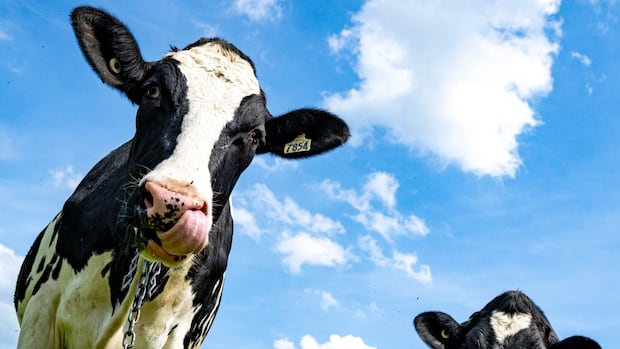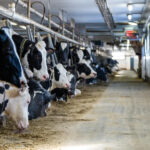A new storm is brewing in North American trade relations as former President Donald Trump’s recent comments have reignited longstanding tensions over Canada’s dairy supply management system. Trump’s criticism of Canadian dairy policies during a campaign stop in Wisconsin has sent ripples through agricultural communities on both sides of the border, potentially setting the stage for renewed trade friction between the close allies.
“The dairy dispute represents far more than just milk and cheese,” says trade analyst Patricia Whelan. “It’s become a symbolic battleground where national sovereignty over food systems collides with free market principles.”
Trump’s pledge to impose a 25% tariff on all Canadian goods if elected has particularly rattled Canadian dairy farmers, who operate under a carefully regulated system that controls milk production volumes and pricing. This system, established in the 1970s, has long been a point of contention in trade negotiations, with American producers arguing it unfairly limits their access to Canadian markets.
Canadian dairy farmers defend the system as essential for stability. “Supply management ensures fair pricing for consumers while protecting family farms from market volatility,” explains Jean Bélanger, a third-generation dairy farmer from Quebec. “Without these protections, we’d be overwhelmed by massive American operations.”
The dairy dispute reflects fundamental differences in agricultural philosophy. Canada’s system prioritizes stability and food sovereignty, while the U.S. approach emphasizes market competition and scale. This philosophical divide has proven difficult to bridge despite multiple trade agreements.
Under the Canada-United States-Mexico Agreement (CUSMA), which replaced NAFTA in 2020, Canada did grant limited additional access to its dairy market. However, American producers have repeatedly claimed Canada isn’t fully honoring these commitments, while Canadian officials maintain they’re operating within the agreement’s parameters.
The economic stakes are significant. Canada’s dairy industry contributes approximately $20 billion annually to the national economy and supports over 220,000 jobs. For American producers, particularly in border states like Wisconsin and New York, access to the Canadian market represents potential growth opportunities in an industry facing consolidation pressures.
Beyond economics, the dispute highlights the political significance of agricultural communities in both nations. In the U.S., dairy-producing regions like Wisconsin represent crucial electoral battlegrounds, while in Canada, the dairy lobby maintains considerable political influence, particularly in Quebec and Ontario.
Trade experts caution that escalating tensions could spread beyond dairy to impact the broader $2.5 trillion bilateral trading relationship between Canada and the United States. “When agricultural disputes heat up, they rarely remain contained,” notes international trade professor Elaine Morrison. “They tend to catalyze broader protectionist sentiments that can damage integrated supply chains across multiple sectors.”
Canadian officials have responded cautiously to Trump’s threats, emphasizing the mutual benefits of the current trading relationship while reaffirming their commitment to protecting the supply management system. “We’ve successfully negotiated with previous administrations, including Trump’s first term,” said a spokesperson for Canada’s trade ministry. “We’ll continue defending Canadian interests while maintaining our valued trading partnership.”
For consumers on both sides of the border, the trade dispute could eventually impact prices and product availability if it escalates into broader tariff actions. However, immediate changes are unlikely as any significant policy shifts would require lengthy implementation periods.
As North America’s agricultural communities watch this developing situation, the fundamental question remains: can two different national approaches to agricultural policy coexist within an integrated continental market, or will one philosophy ultimately need to yield to the other?

























